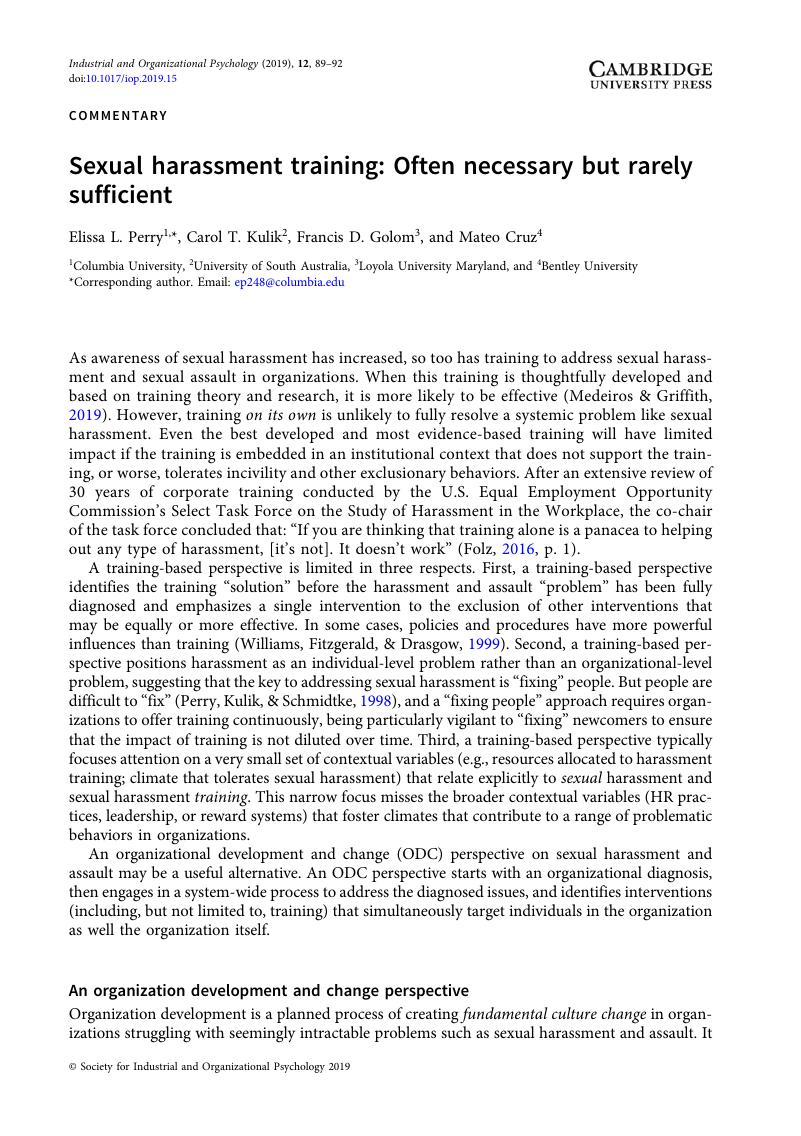Crossref Citations
This article has been cited by the following publications. This list is generated based on data provided by Crossref.
Perry, Elissa L.
Block, Caryn J.
and
Noumair, Debra A.
2021.
Leading in: inclusive leadership, inclusive climates and sexual harassment.
Equality, Diversity and Inclusion: An International Journal,
Vol. 40,
Issue. 4,
p.
430.
Atwater, Leanne E.
Sturm, Rachel E.
Taylor, Scott N.
and
Tringale, Allison
2021.
The era of #MeToo and what managers should do about it.
Business Horizons,
Vol. 64,
Issue. 2,
p.
307.
Lin, Yi-Ling
and
Tseng, Lu-Ming
2022.
Customer power, perceived behavioral control, and life insurance salespeople's reactions to customer sexual harassment.
Equality, Diversity and Inclusion: An International Journal,
Vol. 41,
Issue. 8,
p.
1209.
Holton, Avery E.
Bélair-Gagnon, Valérie
Bossio, Diana
and
Molyneux, Logan
2023.
“Not Their Fault, but Their Problem”: Organizational Responses to the Online Harassment of Journalists.
Journalism Practice,
Vol. 17,
Issue. 4,
p.
859.
Lucas, Jeffrey W.
Hanges, Paul J.
Beavan, Kelly
Epistola, Jordan
Forgo, Emily
and
Shapiro, Debra L.
2023.
Perceptions of Espoused Versus Enacted Culture Around Sexual Misconduct and Other Offenses Among U.S. Military Service Members.
Armed Forces & Society,
p.
0095327X2311534.
Wu, Linfeng
and
Chen, Karen B.
2024.
Gender Swap in Virtual Reality for Supporting Inclusion and Implications in the Workplace.
IISE Transactions on Occupational Ergonomics and Human Factors,
p.
1.
Perry, Elissa L.
2024.
The Choice and Evaluation of Sexual Harassment Interventions in Institutions of Higher Education.
Educational Policy,
Vol. 38,
Issue. 1,
p.
104.



